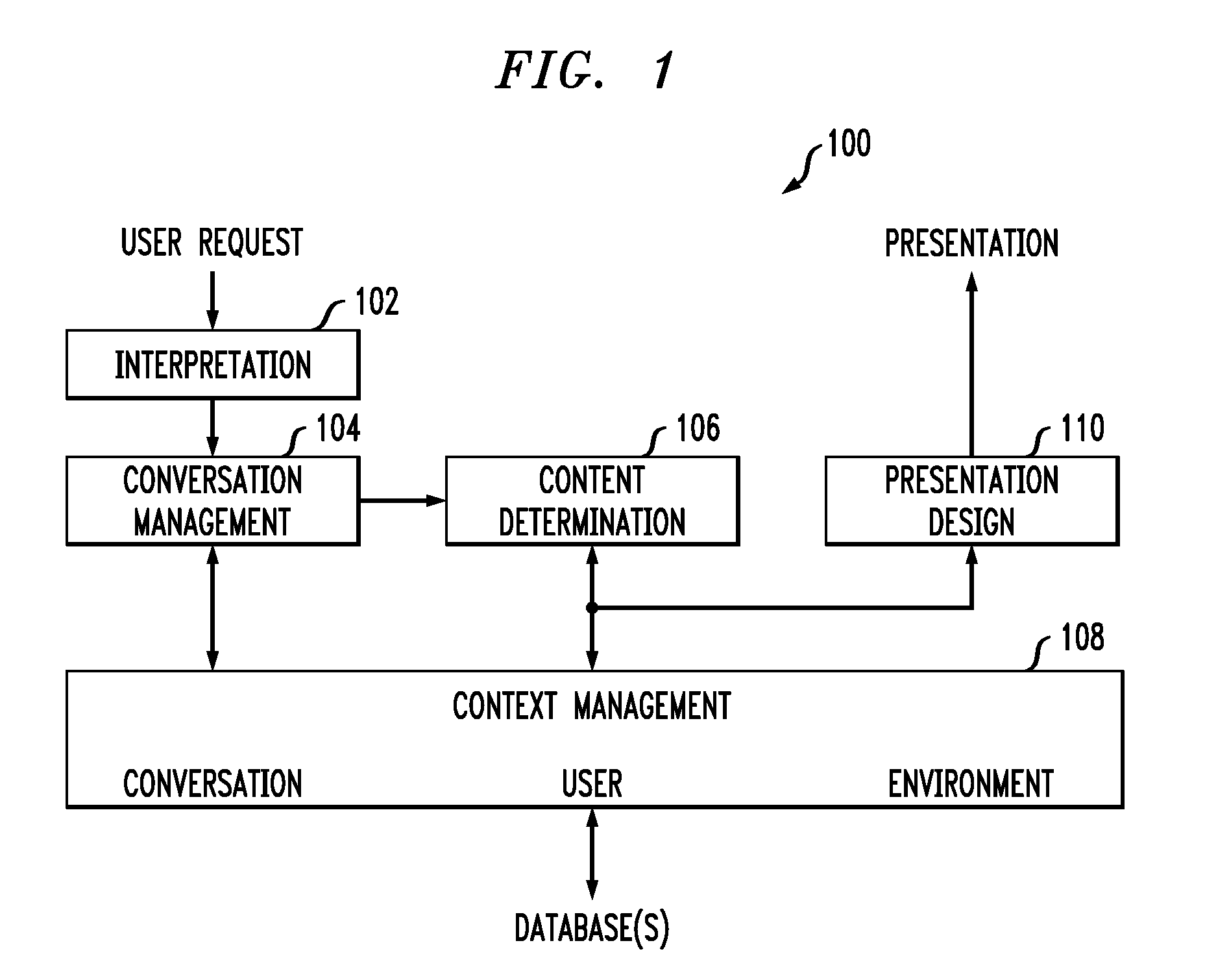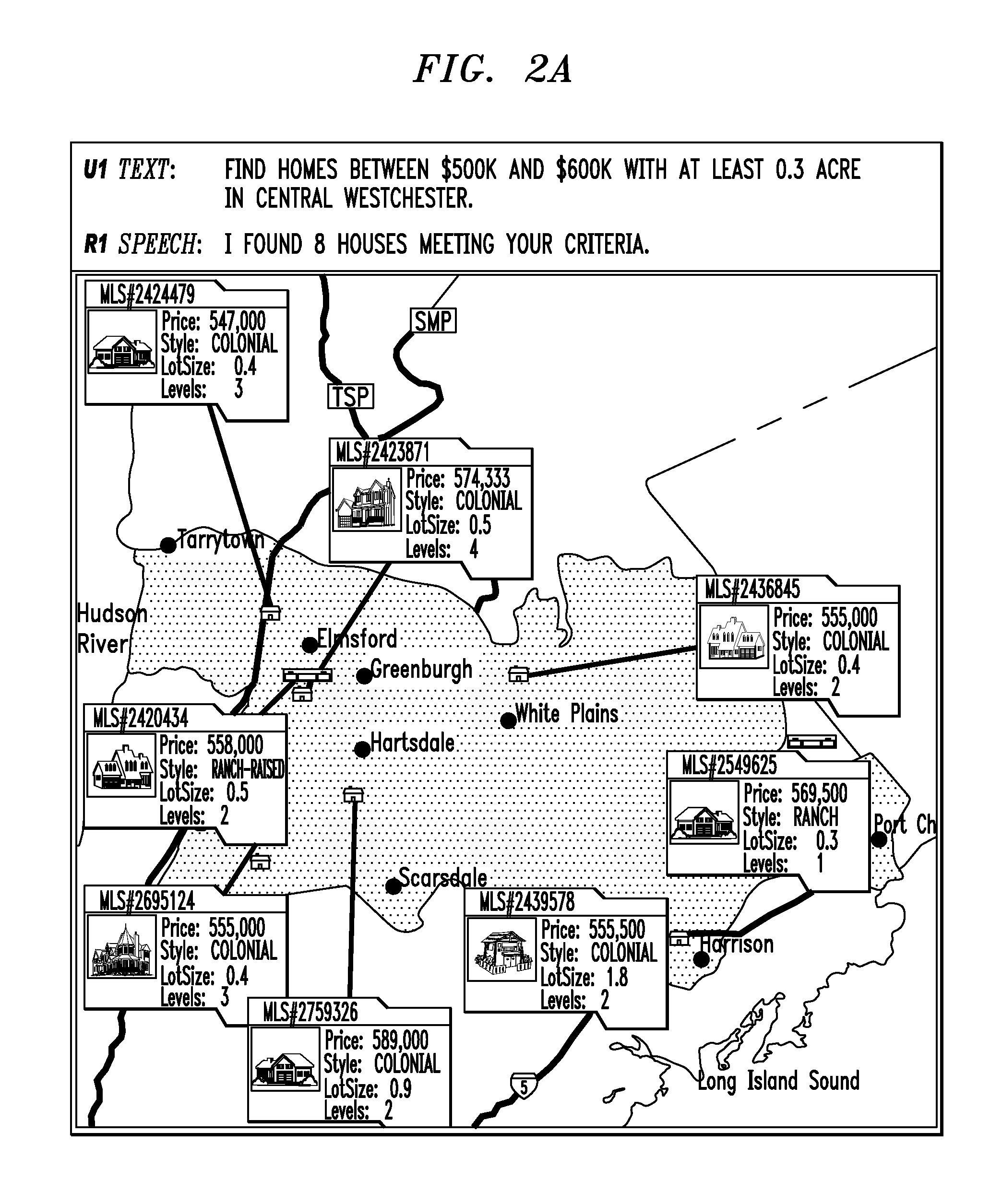Optimization-Based Visual Context Management
a visual context and optimization-based technology, applied in the field of information seeking systems, can solve the problems of difficult to predict the unfolding of a human-computer conversation, user difficulty in comparing and combining information, and inability to plan all possible visual context transformations a priori
- Summary
- Abstract
- Description
- Claims
- Application Information
AI Technical Summary
Benefits of technology
Problems solved by technology
Method used
Image
Examples
Embodiment Construction
[0022]It is to be understood that while the present invention will be described below in the context of exemplary information-seeking applications such as a real-estate application and a hospitality application, the invention is not so limited. Rather, the invention is more generally applicable to any application in which it would be desirable to provide optimization-based visual context management techniques and services. Further, the invention is more generally applicable to any application in which it would be desirable to provide quality presentations of information or such presentation service.
[0023]As used in the following context, we first define the following terms. We use the term “data objects” to broadly refer to any type of data content that is intended to be presented (e.g., a list of house listings residing in a real-estate database or a list of hotels existing on a website). We use the term “media objects” broadly to refer to any type of media that is available to be ...
PUM
 Login to View More
Login to View More Abstract
Description
Claims
Application Information
 Login to View More
Login to View More - R&D
- Intellectual Property
- Life Sciences
- Materials
- Tech Scout
- Unparalleled Data Quality
- Higher Quality Content
- 60% Fewer Hallucinations
Browse by: Latest US Patents, China's latest patents, Technical Efficacy Thesaurus, Application Domain, Technology Topic, Popular Technical Reports.
© 2025 PatSnap. All rights reserved.Legal|Privacy policy|Modern Slavery Act Transparency Statement|Sitemap|About US| Contact US: help@patsnap.com



